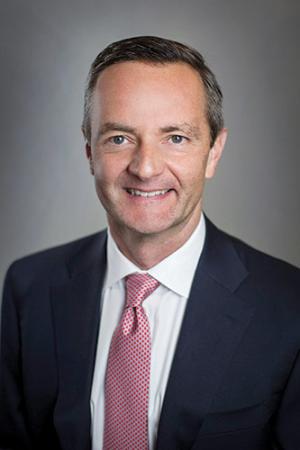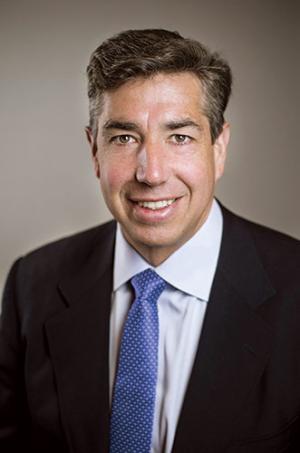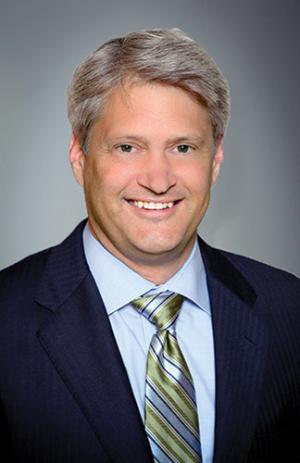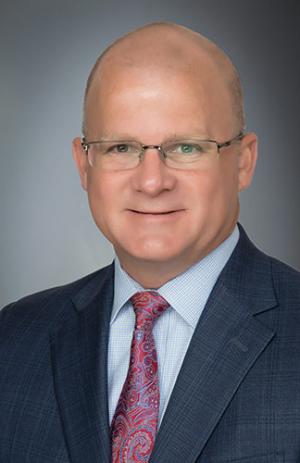Whole Company Engagement
Jason Soules, David Howe, and Ed Dobosz are Partners and Managing Directors at EHS Partners. Jeff Fenter is a Managing Director at EHS Partners.
EHS Partners is unique and it is worth finding out why, and what it can do for companies in the energy and utilities space. For it has a singular focus and wants to engage everyone in your company in a performance turnaround that works.

These expert advisers work with clients to gain internal buy-in and unleash creativity before implementation at the organization. Public Utilities Fortnightly wanted to know more about this method of performance improvement and how it is executed.
The success requires whole company engagement, yet the process is relatively short-term. Jason Soules, David Howe, Ed Dobosz, and Jeff Fenter of EHS Partners dig deep here into how it all comes together.
PUF's Steve Mitnick: Jason, you have a unique way you work with and advise clients. Talk about that.
Jason Soules: Yes, it's true, our approach is unique and it's something I am passionate about.
 Jason Soules: As a client, I experienced EHS’ ability to quickly achieve financial and operational impact. Broad participation and a problem-solving approach provided an environment for great ideas from all levels of the company to see the light of day.
Jason Soules: As a client, I experienced EHS’ ability to quickly achieve financial and operational impact. Broad participation and a problem-solving approach provided an environment for great ideas from all levels of the company to see the light of day.
I first experienced the EHS program as a client when I worked at a bank early in my career. I found the process engaging and experienced EHS' ability to quickly achieve broad financial and operational impact in a way that was aligned with the organization's priorities. Broad participation and a problem-solving approach provided an environment for great ideas from all levels of the company to see the light of day.
Even though my background was in financial services, after joining EHS Partners over twenty-five years ago, I've worked with the leadership teams of more than thirty blue-chip companies in finance, utilities, insurance, transportation, consumer goods, and other industries. The EHS program works well to engage the folks who are doing the day-to-day and help them figure out how to improve their organization.
PUF: David, you've worked with a number of utilities. Why do they call upon you?
David Howe: There are a couple of items they're looking for, and one is a different approach. My background was in consulting. One of the frustrations with consulting is sometimes people from within or outside have lots of great ideas, but many don't get executed.
 David Howe: It’s a different approach, which is engaging everyone from the front line to the CEO in a rapid eighteen-week process to pull out all the changes in work that can improve efficiency, safety, reliability, and other dimensions important to the client.
David Howe: It’s a different approach, which is engaging everyone from the front line to the CEO in a rapid eighteen-week process to pull out all the changes in work that can improve efficiency, safety, reliability, and other dimensions important to the client.
With EHS, we were looking for a way to turn that on its head. For example, to achieve one hundred percent of the opportunity to improve in efficiency, safety, and reliability, we constructed a process by working backward to ensure that it happens.
It's a different approach, which is engaging everyone from the front line to the CEO in a rapid eighteen-week process to pull out all the changes in work that can improve efficiency, safety, reliability, and other dimensions important to the client.
One of the things we also recognized was that if the people who are going to implement the opportunity aren't involved in identifying it, evaluating it, and ultimately recommending whether to go forward, then the full potential of the change action may not be achieved. Accountability starts with early involvement.
So, the program is delivered to create an environment that allows the people who are ultimately going to be accountable, to be the ones fully involved in developing the opportunities.
 Ed Dobosz: It is important to hear from as many people as possible across an organization. We have a lot of ways of collecting information from employees so that everyone is aware and encouraged to contribute their ideas.
Ed Dobosz: It is important to hear from as many people as possible across an organization. We have a lot of ways of collecting information from employees so that everyone is aware and encouraged to contribute their ideas.
And, because the program is multidimensional, we can look at things that are important to utilities in addition to efficiency, which helps the shareholders and ratepayers, including reliability and safety, which are also crucial to the utility.
PUF: Ed, in any large organization, there are people at different levels with great ideas but often they can't get anyone to listen to them. One thing you say you do is help those ideas see the light of day for consideration. How does that work?
Ed Dobosz: It is important to hear from as many people as possible across an organization. We have a lot of ways of collecting information from employees so that everyone is aware and encouraged to contribute their ideas. So, whether it's through simple intranet submissions, using paper drop boxes where needed, or visiting sites to talk personally with employees, we make sure everyone has a voice.
The ideas submitted are then collected by the Project Team, consisting of EHS and selected representatives from the client's side, usually high performers pulled off their regular jobs who work with us hand in hand every day.
 Jeff Fenter: The true power of our program is the sustainable efficiency gained through the combined impact of hundreds of change actions like these.
Jeff Fenter: The true power of our program is the sustainable efficiency gained through the combined impact of hundreds of change actions like these.
It sounds hard to do efficiently, which I feel is one of the bits of our secret sauce, so to speak. We have a quick way of combing through and understanding ideas. Sometimes we may find something from one area and another, and they kind of match up or are worth putting together to consider further for an even larger benefit.
Folks start to gain confidence that we're listening and making a comprehensive list. We're not going to publicize that list right away, but we promise that no individual can take something off the list. We make sure things are considered and evaluated properly with EHS and client involvement.
PUF: Jason, one of the aspects of your program I find unique is the emphasis on a single, one-time initiative by EHS which then sets up the client to continue on their own without paying for follow-on consulting from EHS.
Jason Soules: It's a great point and it's a foundational point for our approach, around accountability and ownership at the line level with the folks who are raising the idea. That's a key part for us to not need to be there forever.
Maybe it's not a great business model for us in some ways, but the business model for our client is to not need to rely on continued outside support. It's for them to know the ideas, own the ideas, ultimately value the ideas and make decisions, and to be clear about the execution of them when we are finished with our engagement, which is typically around eighteen weeks.
There is a transition time where we, as I like to call it, sort of run alongside the bike. They might be wobbling a little with moving forward, so it might take another couple of months to straighten out, and detail final plans. We also help transition our clients to a continuous improvement cycle that they can maintain on their own.
PUF: Talk about a few instances working with utilities when the client was able to make a big impact
David Howe: I've worked with various areas of utilities including generation, distribution, transmission and others, and found ideas in very interesting places. Ideas range from large and transformative changes to tactical everyday improvements.
The ones that stick out are often fairly easy common-sense items. Just by talking to people, you'll learn about many things the company could do but maybe is not doing. So, the process needs to find out how to make sure those things happen.
One instance is with one of the generation groups, who rightly so, want to make sure safety was first. It turns out, as I mentioned earlier, that safety and efficiency can walk hand in hand.
Sometimes when you remove some of the layers or other impediments to making good decisions, you can make them more efficiently and they're often better. One interesting idea was using cameras to do some safety monitoring remotely instead of having people do it at every site. It was common sense at that time to take advantage of technology to be more effective in how we're working.
In another instance, we had contractors coming in during an overhaul of a plant. The contractors would enter in a high security setting that required a time-consuming badge in and out process.
That took quite a while, after which they'd get to work but then it would be lunchtime. They'd badge back out, have lunch, then badge back in.
Employees suggested allowing contractors to eat on the premises to recapture all that time being spent badging in and out. That became an idea that that was approved, saved money, and was appreciated by the employees and contractors.
Ed Dobosz: I have an example of how our program leverages different parts of an organization and even policy development to implement an idea. While working with wind generation, there was an issue related to how an eight-hour workday inhibited efficiency where everyone was working primarily in remote locations.
Employees were getting up in the morning and driving to a central location, sometimes up to an hour. They might have a half hour of corporate training for some reason, or discuss the work for the day, and then have to drive an hour or two out to a site. In some instances, the work on the site might take six to eight hours. They didn't have enough time in an eight-hour day, so they had to go to that site twice.
The question was, how many people in an organization do you have to get approval from to change the boundaries? Could they work a ten-hour a day? A twelve-hour day? Could they stage vehicles in certain locations? Could they modify where and when their team and corporate responsibilities were required? Could they do something to improve productivity?
Many of those questions weren't under that department's control. But their ideas and our program led to many changes along those lines. And when we talked to the employees afterward, they loved it, and knew they were a part of making good changes. That's an example of where we cleared enough hurdles to where their days got better and made more sense.
Jeff Fenter: One aspect of our program that hasn't been mentioned is that we also focus some attention on revenue, primarily the daily blocking and tackling that might be contributing into revenue loss or a failure to capture everything that has been earned.
For example, an analysis within customer service showed that a late fee policy was being inconsistently applied. When we looked at the total fees that were not charged, it sparked a discussion and ultimately a decision to adjust policy to still be fair to customers while recovering additional lost revenue.
Finally, as you've heard each of these examples, keep in mind that the true power of our program is the sustainable efficiency gained through the combined impact of hundreds of change actions like these across and between departments and units that reflect the broad engagement and creativity of the entire company.
PUF: What's 2023 going to be like for EHS in the utilities industry?
Ed Dobosz: We've been very busy over the last couple of years, and we think we'll continue to be. We are talking with leaders in utilities and other industries, and there's a lot of interest in our unique approach and how we handle things. It's going to be another busy year.
With the cost of raw energy inputs going up so rapidly and the impact of inflation overall, we continue to hear that utilities are even more focused on what is hitting the bill. To the extent that utilities want to find ways to create room on that bill in whatever fashion, so ratepayers do not continually see inflation, what we do has proven to be valuable.
David Howe: Finally, key to the utility industry now is the transformation to clean sources of energy. It's high on the minds of everybody in the utility industry. As that takes pace, there's a need for capital injection to continue to develop green energy facilities, capabilities, and capacity.
There's going to be a continued need to fund that without putting too much pressure on ratepayers. There's going to be a continued demand for finding ways to operate as effectively and efficiently as possible, and also find out how to free up capital and deploy it as efficiently as possible so projects can be done in the best way for ratepayers and shareholders.



